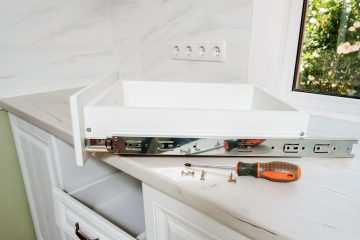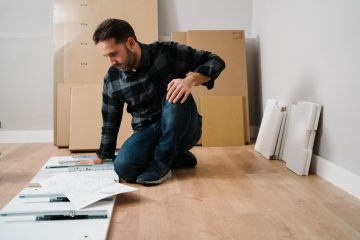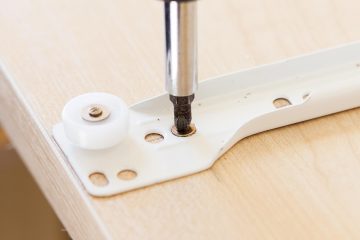The walls are the showcase of every apartment, they occupy the largest space and are the most eye-catching. Any renovation is primarily a change in their texture or color. How to take the best care of their aesthetics?
Imagine the worst possible variant – the wall in an old tenement house, covered with a long-term layer of wallpaper, under which – horrible! – Newspapers were glued on (lead in printing ink prevented worms from lying down). And we dream of an elegant plaster smoothness, illuminated by halogens emphasizing any irregularities. Where to start?
Preparation
This isn’t “clean work”. Furniture, floor, electrical sockets and light switches have to be covered with a painting foil. Make sure you wear the right clothes – sanding dust can penetrate literally anywhere. A paper mask on the face and a protective headgear will increase the comfort of our work. Prepare the tools – brush or roller, bookbinding knife, sandpaper, bricklayer’s trowel, spatula.
2. removal of old wallpaper and newspaper underlay
There are preparations available on the market to remove wallpaper. They have a wetting effect and weaken the consistency of the adhesive. These are usually concentrates, so they should be diluted beforehand and applied to the wall with a paintbrush or roller. For thicker wallpapers – vinyl, washable or varnished – it is worth cutting them with a bookbinding knife so that the liquid can penetrate underneath. After the time declared by the manufacturer, it is enough to grab the corner of the wallpaper and tear it off at the right angle. We should remember to avoid too sudden movements, so that the wallpaper does not go away with the plaster. The remaining permanently glued elements should be removed with a spatula or – in extremely difficult cases – neutralized with sandpaper.
Filling the gaps
The walls in old tenement houses abound in cracks, cracks, kinks or even holes, caused by nails or dowels driven into them beforehand. All these flaws need to be filled with gypsum mixed with water. It should have a “muddy” consistency, so that it does not run off, but only eliminates cavities.
4. application of the gypsum finish coat
You can use gypsum mixed with water, you can use ready-made finishing coats. Using a masonry float, they are applied to the wall and evenly distributed over the entire surface. After the time necessary to dry (when the lumps can be easily crushed under the fingers), the time comes for the most difficult part of the project.
5. grinding
The classical method involves the use of abrasive nets attached to a bricklayer’s float. For larger surfaces (and less experience), an orbital sander will be useful. It is also worth buying a halogen lamp and illuminate the wall with it at a small angle – any irregularities will then be visible as in a palm of your hand.
After all, there are only a few hours of tedious cleaning of the omnipresent plaster dust – unfortunately, no technology allows to avoid it – and now we can paint a perfectly smooth wall in the colour of our dreams.
Categories: House


